18
julioResidential Boarding Up Tools To Ease Your Daily Life Residential Boarding Up Trick That Should Be Used By Everyone Learn
Understanding Residential Boarding Up: A Comprehensive Guide
As severe weather condition occasions and socio-political unrest end up being more regular, many homeowners are thinking about boarding up their homes to safeguard versus potential damage. Residential boarding up involves covering windows, doors, and other openings with boards to prevent vandalism, theft, or storm damage. This post explores the numerous aspects of residential boarding up, including its significance, methods, materials, and important considerations.
Why is Residential Boarding Up Necessary?
Residential boarding up serves numerous functions, mainly concentrated on safety and protection. The following are essential reasons property owners choose this preventive step:
Protection from Extreme Weather: Hurricanes, storms, and heavy snowfall can cause considerable damage to unprotected homes. Boarding up helps prevent broken windows and water invasion.
Discouraging Crime and Vandalism: In areas with high criminal offense rates or throughout civil discontent, boarding up makes a home less appealing to potential vandals or thieves.
Insurance Requirements: Some insurance provider may need a home to be boarded up in particular conditions to prevent claim denials.
Preserving Property Value: A damaged home can considerably reduce property worth. Boarding up assists maintain the structural integrity of a property, decreasing potential repair costs in the long run.
Methods of Residential Boarding Up
Property owners can select from numerous methods to board up their homes. The option mainly depends on spending plan, ability level, and the type of protection required.
Methods Include:
Plywood Boarding: The most common technique includes utilizing sheets of plywood, typically 5/8-inch thick, that can be cut to fit doors and windows.
Hurricane Shutters: These are permanent components that can be installed over windows and doors. They provide more robust protection than plywood and can be deployed quickly.
Lexan or Polycarbonate Panels: Clear, durable panels that enable light to enter but avoid things from breaking through. These are frequently a more visually pleasing alternative to plywood.
Metal Screens: These screens can offer a long-term solution for safeguarding windows, particularly in areas susceptible to break-in.
Expandable Barriers: Some property owners select expandable barriers that can be gotten used to fit different openings. These can be more expensive however offer greater convenience.
| Technique | Cost Range | Installation Difficulty | Level of Protection |
|---|---|---|---|
| Plywood Boarding | Low (₤ 50-₤ 100) | Moderate | High |
| Cyclone Shutters | Moderate (₤ 200-₤ 600) | Easy to Moderate | Extremely High |
| Lexan Panels | Moderate to High (₤ 300-₤ 800) | Moderate | High |
| Metal Screens | Moderate (₤ 150-₤ 400) | Easy | Moderate |
| Expandable Barriers | High (₤ 600+) | Moderate to Difficult | High |
Materials Used for Boarding Up
When considering residential boarding up, the kind of products used can greatly affect efficiency and sturdiness. Here are some typically utilized products:
Common Materials:
Plywood: Widely offered and economical; typically dealt with for weather resistance.
Lexan/Polycarbonate: Offers protection with visibility; can stand up to substantial impact.
Metal Panels: Robust and durable; often utilized in commercial structures however can be adapted for residential usage.
Screws/Bolts: Essential for protecting the boards to the property frame. It's important to use resistant products to avoid rust.
Cyclone Clips: For protecting plywood boards to windows and doors better, specifically in typhoon zones.
Advantages And Disadvantages Table
| Material | Pros | Cons |
|---|---|---|
| Plywood | Economical, widely available | Can degrade quickly if not treated |
| Lexan | Resilient, enables light | More expensive than plywood |
| Metal Panels | Exceptionally robust, long-lasting | Heavy, might need professional installation |
| Screws/Bolts | Secure fastening method | Some deterioration risk if not effectively treated |
Secret Considerations for Residential Boarding Up
Before continuing with residential boarding up, numerous aspects ought to be taken into consideration. The following things can assist homeowners:
Local Regulations: Verify local building regulations and any policies that use to boarding up residential homes. Some areas might have restrictions related to external adjustments.
Window Types: Different windows (casement, moving, and so on) might need specific boarding methods. Take accurate measurements.
Installation Timing: It is perfect to board up before any forecasted storm or civil unrest to make sure that your property is sufficiently safeguarded from the onset.
Securing Insurance: Consult with your insurance provider to comprehend any requirements for boarding up and ensure that the property is covered.
Do it yourself vs. Professional Help: Assess your skills or think about hiring experts for installation, as incorrect boarding might cause inadequate protection.
Regularly Asked Questions (FAQs)
Q1: How far ahead of time should I board up my home?A1: Ideally, boarding up should be done at least 24 to 48 hours before a predicted storm or civil discontent to permit sufficient preparation time. Q2: What is the very best product

to utilize for boarding up windows?A2: Plywood is the most extensively used material due to its availability and cost-effectiveness; however, lexan or metal panels use higher toughness and strength. Q3: Can I use duct tape or adhesive to secure boards?A3: No, duct tape and adhesive might not
provide adequate security and are not advised. Constantly utilize screws or bolts for proper protecting of boards. Q4: Does boarding up my windows increase my home insurance coverage costs?A4: Boarding up can lead to discount rates on your home insurance coverage as it lowers the risk of damage throughout severe events. It's recommended to speak with your insurance coverage supplier. Q5: Is boarding up homes an irreversible solution?A5: No, boarding up is a temporary measure intended for particular scenarios(storms, potential discontent). It must be removed once the hazard has passed
. Residential boarding up is a proactive procedure that every house owner ought to consider in today's unpredictable environment and social landscape. By understanding the approaches readily available, the materials used, and the finest practices for setup, homeowners can significantly lower the chance of damage to their property. Additionally, by being informed about local regulations and insurance requirements, they can make a well-rounded choice that safeguards both their family and financial investment.


Reseñas